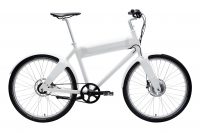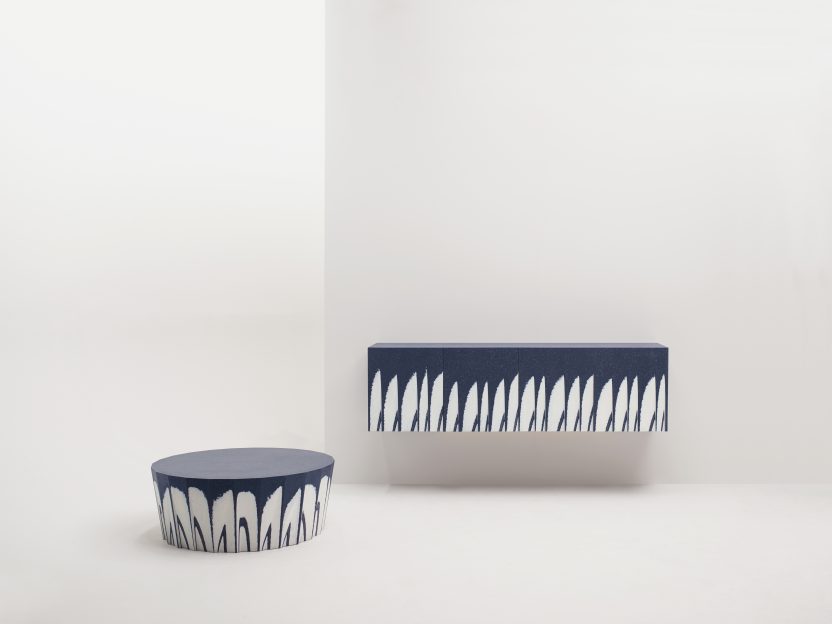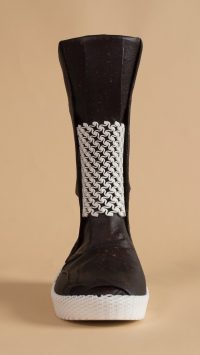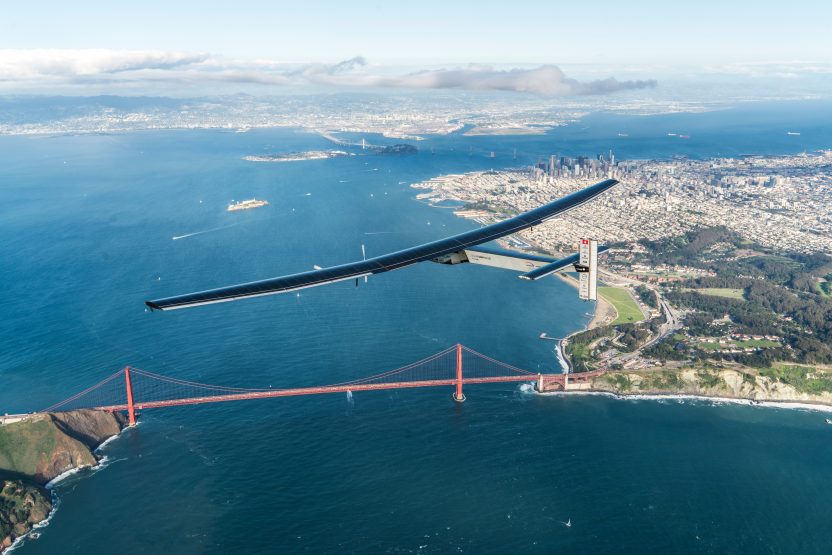
Fibre-Fixed
Composites in Design
The ever-growing mountain of waste, polluting company cars, the ageing population: we have more than enough problems to tackle in the years ahead. However, one solution has appeared from an unexpected source: new materials.
The exhibition Fibre-Fixed. Composites in Design will run from 26 October 2018 until 21 April 2019 at Design Museum Gent. This exhibition shows how combining (bio)plastic with fibres yields materials we have never seen before. Synthetic materials like epoxy, polyester or polypropylene are reinforced with carbon, glass, flex, hemp or wood fibres: a marriage between composites that combines the strength and rigidity of fibres with the lightness of plastics. Carbon fibres are, for example, just as rigid as steel, but weigh five times less. And that inspires designers.
If the Eames were alive today, they would be playing with carbon fibre
John Hamilton, Design Director of Coalesse – 2014
At least 85% of the ecological footprint of a car is created by driving in it, for example. The biggest culprit in this case is the weight of the car: heavier cars need more energy to run. After the first sports cars with a carbon fibre body and chassis were developed about a decade ago, the technology is now ripe for conventional models. This is really necessary, because the weight of the batteries in an electric car needs to be compensated with a lighter frame. Thanks to the use of composites, vehicles like the FiF minivan can also drive a lot further using the same amount of energy. The same principle applies to bicycles. Biomega’s OKO E-bike weighs only 18kg because the battery and the mudguards are integrated into the composite frame. These are just a few examples of new mobility concepts and more energy-efficient vehicles for an increasingly urban society.


Using more and more bio-based fibres and bioplastics will help us further reduce our ecological footprint. Anyone who buys the Flax Chair by Christien Meindertsma is purchasing a composite of locally grown flax with polylactic acid (PLA) plastic. Not only is this lightweight chair 100% bio-based and therefore fully biodegradable, no material waste is created either during its production. Another project that will fundamentally change our production and consumption process is the Solid Textile Board made by Really, a subsidiary of Danish designer textile manufacturer Kvadrat. Really uses textile waste, inferior materials and recycled fabric as raw materials for its composite. This end-of-life cotton and wool is ground into fibres and pressed into white composite boards using a special binder. The exterior layer gets its colour from discarded denim, for instance. One of the designers to start using these boards is the London-based Raw-Edges Design Studio. The studio’s approach was to scrape away part of the blue exterior layer to expose the layered structure of the material. This process yielded their design Fine Cut.
Designers are not only intrigued by the technical possibilities of composite materials. The way in which the properties of a material can provide the point of departure for new insights and ideas is equally important. The high-tech aspect of composites is, in such cases, linked to artistic imagination, poetry, rebellious beauty, craftsmanship and experiment. Designers are experimenting, for example, with less obvious fibres like seagrass, pine needles, banana peel, artichoke stalks and even fibre-reinforced mycelium. With regard to the latter, a network of fungal threads (also called hyphae) grows around a fibrous organic foundation. This network of hyphae grows directly in a mould, digests the organic material and retains the fibres. Once the mycelium structure is sturdy enough, the growth process is halted by dehydration. An ideal material for our future on Mars, according to OurOwnSkin & Officina Corpuscoli, who were commissioned by the MoMA to create Caskia / Growing a MarsBoot. In this scenario, astronauts’ sweat is filtered and combined with mycelium spores. This approach enables composite material for clothing and footwear to be produced while travelling through space: Made in Space, thus.


The exhibition Fibre-Fixed. Composites in Design
features an even more extensive selection of design projects that make use of composite materials. From a unique model of the Solar Impulse, the first aircraft to fly around the world fuelled by solar energy, to featherlight lower leg prostheses and ‘Vegan Design’: curators Ignaas Verpoest (KU Leuven) and Lut Pil (LUCA School of Arts) are exhibiting the developments of the past five years and presenting the breakthroughs expected for the coming years.
Fibre-Fixed. Composites in Design is a co-creation project by the curators in collaboration with Dutch design collective envisions that in many ways resembles the interplay between various materials to yield a composite material. The image of composites comprises a suitable metaphor for the collaboration between the various parties. The exhibition presents the outcome of an intensive dialogue between a materials expert, an art and design historian, a designer collective and the museum.
Scenography
In the scenography, designed by Tomas Dirrix of envisions, the projects are displayed like recognisable objects in an urban landscape. Standing on a central look-out platform, visitors can take in an environment full of objects made from composite materials. After this panorama view, they can start to zoom in. This set-up allows trains of thought to travel in various directions, and encourages visitors to connect domains that, at first glance, appear to bear little relation to each other.
On the ground floor, beneath the landscape, a laboratory context has been created: further explanations are given about the materials, processes and concepts of the projects being exhibited through the integration of research aspects in a laboratory setting. The intention of Fibre-Fixed. Composites in Design is to offer new insights and promote creative thinking. Some processes are also presented poetically, like the growth of mycelium in the film One Day/Four Seconds by Wim van Egmond, or the recycling and processing of textiles into textile composite material in the publication and animated video A Single Sample. Really by Christien Meindertsma. Workshops and lectures complement the laboratory and offer additional opportunities to experience the material in concrete terms.
Book
The book that is published on the occasion of the exhibition, edited by Ignaas Verpoest and Lut Pil, features an even larger selection of recent examples of objects made from composites. The book is actually a sequel to the exhibition and accompanying publication From Bakelite to Composite. Design with New Materials (Design Museum Gent, 2002). It is being published by Design Museum Gent – Stichting Kunstboek and will appear in December 2018. The book was designed by graphic design agency Team Thursday from envisions.
Practical information
Fibre-Fixed. Composites in Design
26.10.2018 – 21.04.2019
Admission: € 8 / € 6 / € 2
Open on weekdays from 9:30 to 17:30.
Open at weekends, on public holidays and during school holidays from 10:00 to 18:00.
Closed on Wednesdays.
Sandra Plasschaert
Cats Communication
Press & PR
+32 479 35 10 39
sandra@catscommunication.be
Simon Adriaensen
Design Museum Gent
Communication
+32 9 323 64 88
simon.adriaensen@stad.gent